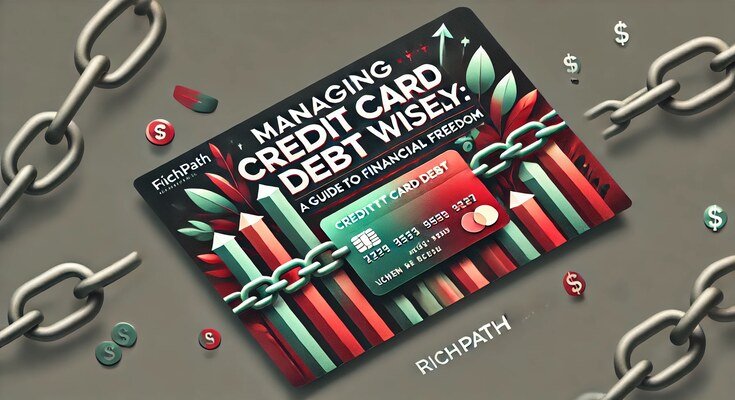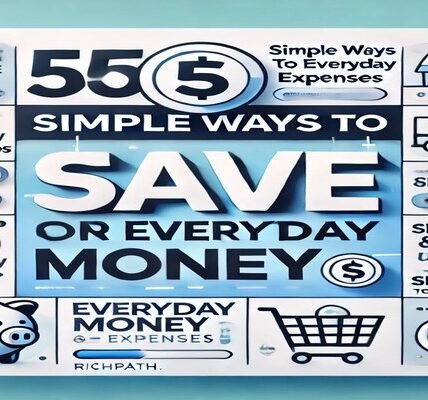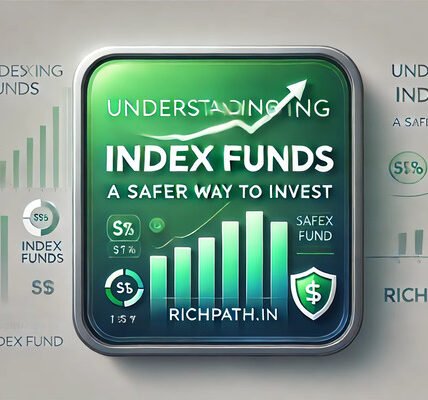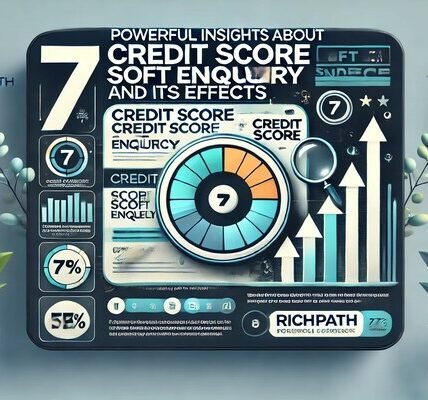Managing Credit Card Debt Wisely: A Guide to Financial Freedom

Managing Credit Card Debt: Effective Strategies for Financial Stability
Managing Credit Card Debt is essential for maintaining financial health and avoiding long-term financial burdens. While credit cards offer flexibility, convenience, and rewards, they can quickly become overwhelming if not used responsibly. This guide explores the best strategies for managing credit card debt, helping Indian consumers regain control over their finances.
Understanding Credit Card Debt
Credit cards allow users to make purchases on credit, meaning they can buy goods or services without paying upfront. However, this convenience comes at a price—high interest rates, often ranging from 18% to 45% per annum. If the balance is not paid in full by the due date, interest accumulates, leading to an increasing debt burden.
The Impact of Credit Card Debt
When payments are missed or only the minimum amount is paid, interest compounds over time. This can trap individuals in a cycle where even minimum payments become unaffordable, leading to financial distress.
Example:
Anjali had an outstanding credit card balance of ₹50,000 at an annual interest rate of 24%. By making only the minimum payment each month, her debt kept growing, adding ₹12,000 in interest within a year.
Effective Strategies for Managing Credit Card Debt
1. Pay More Than the Minimum Payment
One of the biggest mistakes people make is paying only the minimum amount due. This results in prolonged repayment periods and higher interest costs.
Strategy: Always aim to pay more than the minimum amount each month. Even an extra ₹1,000-₹2,000 can significantly reduce the outstanding balance and lower interest payments.
Example:
Deepak had a credit card balance of ₹30,000. Instead of paying the ₹1,500 minimum, he paid ₹5,000 each month. This helped him clear his debt in just six months instead of two years, saving thousands in interest.
2. Consolidate Your Credit Card Debt
If you have multiple credit cards with high balances, consolidating them into a single loan can simplify payments and reduce interest costs.
Balance Transfer Option:
Many Indian banks offer balance transfer options, allowing users to shift their high-interest debt to a new card with a lower interest rate, usually for an initial period of 6-12 months.
Example:
Ravi transferred ₹80,000 from three credit cards to one with a 12% promotional interest rate for 12 months. This helped him pay off his debt faster while avoiding excessive interest.
3. Create a Realistic Repayment Plan
A structured repayment plan ensures consistent progress toward debt elimination.
Steps to Create a Plan:
- Assess Your Debt: List all credit card balances and their interest rates.
- Prioritize Payments: Use the avalanche method (paying the highest interest first) or the snowball method (paying the smallest balance first).
- Cut Unnecessary Expenses: Allocate extra funds toward debt repayment.
- Automate Payments: Set up automatic payments to avoid late fees.
Example:
Sanjay dedicated 20% of his monthly income to managing credit card debt, prioritizing cards with the highest interest rates first.
4. Avoid Accumulating New Debt
To successfully eliminate credit card debt, it’s crucial to avoid taking on new debt while repaying existing balances.
Strategy: Use cash or a debit card for non-essential purchases and reserve credit card use for emergencies only.
Example:
Nisha realized that excessive credit card spending was worsening her debt. She switched to using cash for daily expenses and focused on paying down her outstanding balance.
5. Negotiate with Your Credit Card Issuer
If you’re struggling to make payments, contact your credit card issuer to discuss options such as:
- Lowering your interest rate
- Extending your repayment period
- Temporary interest waivers
Example:
Ajay negotiated with his bank and secured a 6-month interest-free period, giving him time to pay off a significant portion of his balance without additional interest.
6. Track Your Spending and Budget Wisely
Keeping track of expenses helps prevent unnecessary credit card use and ensures more funds are available for repayments.
Strategy: Use budgeting apps or spreadsheets to monitor monthly expenses and cut back on non-essential spending.
Example:
Anjali analyzed her expenses and noticed she spent excessively on dining out. By reducing this, she saved ₹5,000 per month, which she redirected toward debt repayment.
Benefits of Managing Credit Card Debt Effectively
1. Improved Credit Score
Timely payments and reduced credit utilization enhance your credit score, leading to better loan options in the future.
2. Financial Freedom
Paying off credit card debt allows you to allocate funds toward savings, investments, and other financial goals.
3. Reduced Financial Stress
Debt can be a major source of stress. Eliminating or reducing it brings greater financial security and peace of mind.
Common Mistakes to Avoid While Managing Credit Card Debt
❌ Paying Only the Minimum Due
This keeps you in a cycle of long-term debt and high-interest payments.
❌ Ignoring High-Interest Debt
Prioritizing lower-interest debts over high-interest credit card debt can increase overall repayment costs.
❌ Taking on New Debt
Avoid using credit cards for unnecessary expenses while trying to clear existing balances.
❌ Missing Payments
Late payments lead to penalties and increased interest rates, making managing credit card debt even more challenging.
Final Thoughts: Taking Control of Your Credit Card Debt
Managing credit card debt requires financial discipline, careful planning, and a proactive approach. By paying more than the minimum, consolidating high-interest debt, tracking expenses, and avoiding new debt, you can achieve financial stability.
If you’re struggling with managing credit card debt, take action today by creating a repayment plan and exploring consolidation options. With the right strategies, you can achieve a debt-free future and build a strong financial foundation.
For expert financial insights, visit Rich Path. and start your investment journey today! 🚀
Read more –
Top 5 Mutual Funds for Long-Term Growth in India in 2025








